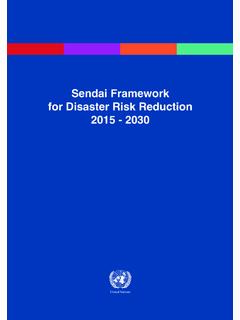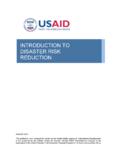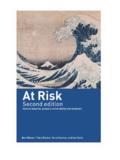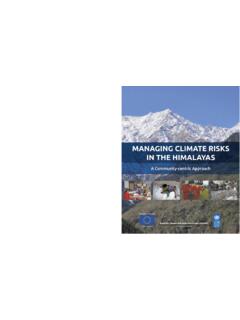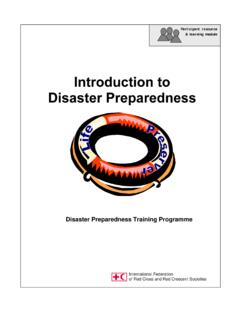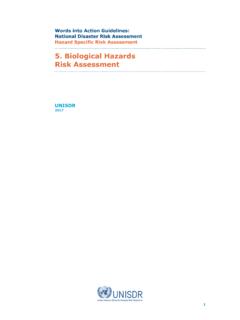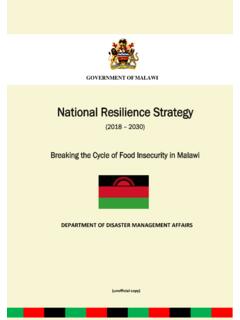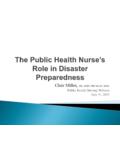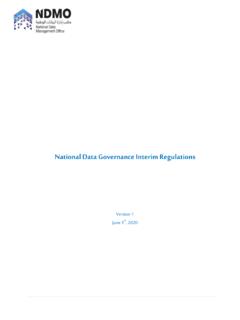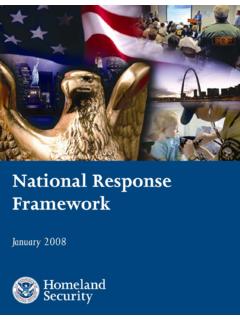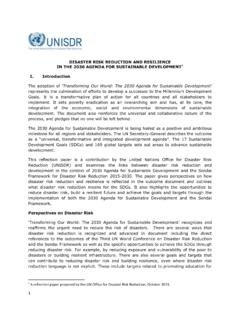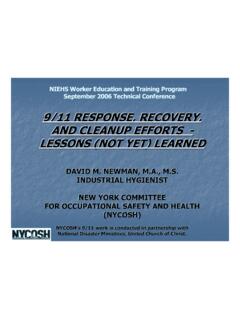Transcription of DISASTER RISK MANAGEMENT AND PLANNING FOR ... - …
1 1 DISASTER RISK MANAGEMENT AND PLANNING FOR HOSPITALS & HEALTHCARE FACILITIES14 OCTOBER 2009 UNISDR LEJWELEPUTSWA DISTRICT, FREE STATEC luster: Hospitals And Health Facilities ManagementDirectorate: Emergency Medical Services & DISASTER MANAGEMENT UNISDR 2008/09 The price we pay for the failure of hospitals or health facilities due to disasters is too high. In comparison, the cost of making hospitals safe from disasters is tiny. DISASTER damage to health systems is a human tragedy, results in huge economic losses, deals devastating blows to development goals, and shakes social confidence.
2 Making hospitals and health facilities safe from disasters is an economic requirement, and also a social, moral and ethical necessity. LEGISLATION national Health Act, Act 61 of 2004 DISASTER MANAGEMENT Act, Act 57 of 2002 DISASTER MANAGEMENT framework of 20053 TSHWANE DISTRICT HOSPITAL APRIL 2007 5 WHO - DISASTER DEFINITION Any occurrence that causes damage, economic disruption, loss of human life and deterioration in health and health services on a scale sufficient to warrant an extraordinary response from outside the affected area or community AMERICAN COLLEGE OF EMERGENCY PHYSICIANS When the destructive effects of nature or manmade forces overwhelm the ability of a given area/community to meet the demand for healthcare 6 VAALMED HOSPITAL A&E 21 JULY 2004 Disasters are NOT simply large scale occurrences!
3 They have a significant impact upon the community, people, infrastructure and upon the resources required to respond effectively. Disasters produce long-term problems pertaining to recovery and rehabilitation. They usually overwhelm the capacity of the community, its resources and infrastructure. Disasters produce death, injury and disability!8 COMMON DENOMINATORS Disruption is of such a magnitude that the organization, infrastructure and/or resources are overwhelmed. Inability for an institution to return to normalcy post event without external assistance.
4 Generally, the term DISASTER refers to a natural event in combination with its damaging effects eg. Loss of life and limb, destruction of infrastructure, inability to provide adequate healthcare, 10 DISASTER CLASSIFICATIONS Slow/insidious onset OR Creeping Disasters-Drought-HIV/AIDS Sudden / Rapid Onset-Earthquakes-Tornadoes-Floods-Fires -CNBR-Strike Action In the case of healthcare facilities, disasters can be either internal and/or external. 11 DISASTER CLASSIFICATIONS Internal:-Structural (Building, Oxygen, Electricity, etc)-Functional (Strike action, Surge of patients, CNBR, etc) External:-Floods-Mass Casualty Incidents Natural & Human induced disasters continue to strike and increase in magnitude, complexity and economic impact.
5 Worldwide, the poor and socially disadvantaged groups suffer most from disasters and are usually least equipped to deal with them. GLOBAL TRENDS The majority of the world s most prolific disasters occur in the regions between the Tropic of Cancer in the North and the Tropic of Capricorn in the South, with approx. 20 major disasters annually. 90% of all deaths from disasters occur in Third World Nations (Alexander, 1993) Globally, disasters cause approx. 250,000 deaths per annum and lead to economic losses of approx. US$ 50 Billion (ZAR 400,000 Billion).
6 (UN 2006)12 Ifreadiness(and capacity) is insufficientIfvulnerabilitiesare too greatIf the scale ofhazardis too bigThen, theriskis too high,emergenciesmay not be managed locally, the communities may not cope, DISASTER will occur. From DISASTER ManagementTo Comprehensive DISASTER Risk MANAGEMENT DisasterDisaster PreparednessDisaster MitigationDisaster PreventionReconstructionEmergency ResponseWarningRehabilitationDisaster Risk MANAGEMENT DISASTER Risk MANAGEMENT Public safety issues at local levels Complex process involving a multitude of stakeholders Implemented by multidisciplinary/multisectoral team working within both the healthcare facility and the community Effective implementation can only occur if there s a mutually agreed upon PLANNING process
7 DISASTER Risk MANAGEMENT Hospital PLANNING should ensure that special interest groups within the drainage community are included in DISASTER risk MANAGEMENT and preparedness plans:-Rural communities-Aged persons-Women-Children-Disabled persons-Mentally ill persons-Refugees-Homes for the aged-Homes for the disabled-Informal settlements17 ALL HIGH RISK HAZARD APPROACH An agreed set of arrangements encompassing all high risk hazards/vulnerabilities, both natural and man-made. Rather than developing different plans and procedures for each hazard (silo effect), a single set of MANAGEMENT arrangements (Hospital Major Medical Incident MANAGEMENT System) should be and applied to all the hazards a community is facing.
8 COMPREHENSIVE APPROACH1. Prevention & Mitigation Vulnerability reduction and mitigation through programs such as socio-economic activities and addressing root causes. Regulatory and physical measures to prevent disasters from occurring, or to mitigate their effects COMPREHENSIVE APPROACH2. Preparedness Plans and programs, systems and procedures, training and education to ensure that when and if disasters do occur, resources (personnel and equipment) can be mobilized and deployed efficiently and effectively.
9 COMPREHENSIVE APPROACH3. Response Actions taken leading up to and immediately after the impact of a DISASTER to minimize the effects, and to provide immediate rescue, relief and support to the community. COMPREHENSIVE APPROACH4. Recovery The long-term restoration and rehabilitation of an affected community. It's a complex and protracted process, taking many years . Recovery activities should be connected with prevention and mitigation INTEGRATED APPROACH Effective DISASTER risk MANAGEMENT requires an active partnership between all relevant agencies and authorities.
10 It means that all organizations with a role to play have to work together in MANAGING RISK REDUCTION. A cooperative and integrated working relationship is essential. The entire system needs to operate with a common goal: local up to national and vice-versa. DISASTER Mitigation in Hospitals Improved design of new healthcare facilities Retrofitting of old healthcare facilities national policy & guidelines Hospital DISASTER Preparedness Plan Testing the plan Revising & updating the plan Vulnerability Analysis Process of DISASTER Preparedness PlanningPlanPlanImplementImplementReview & Review & EvaluateEvaluateMake AdjustmentsMake AdjustmentsBased on DataBased on Data Process of DISASTER Preparedness PLANNING DISASTER preparedness PLANNING is a continuous process Written hospital preparedness plans must be dynamicin order to
